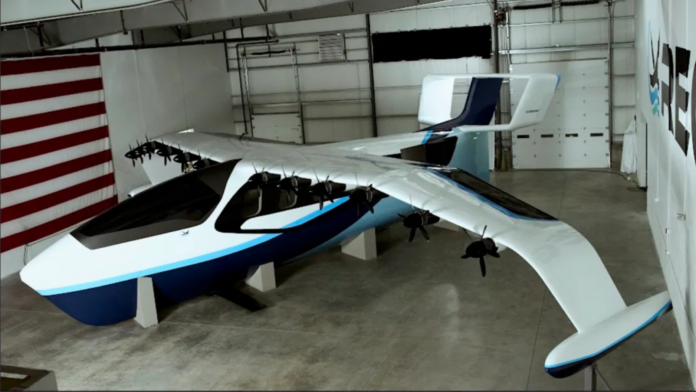Regent’s innovative approach to electric aviation combines hydro-foiling watercraft and electric seagliders to address the limitations of battery range. By utilizing ground effect and operating under maritime jurisdiction, Regent aims to revolutionize the future of aviation. With recent funding of $60 million in a Series A round, Regent is poised to build a proof-of-concept prototype and expand its team. The company plans to start trials next summer and achieve its first human flight by the end of 2024. Regent’s product lineup, including the Viceroy and Monarch seagliders, along with its partnership with Japan Airlines, demonstrates the company’s commitment to sustainable transportation. Potential markets for seaglider operations extend from Miami and the Bahamas to international regions such as the Mediterranean Sea and the North Sea.
Regent’s Innovative Approach to Electric Aviation
To overcome the limitations of battery range in electric aviation, Regent has developed a groundbreaking approach. By combining hydro-foiling watercraft and electric seagliders, they have found a solution for sustainable transportation over extended distances. This innovative approach offers improved efficiency and range, enabling Regent to pioneer the future of electric aviation.
Benefits of Combining Hydro-Foiling Watercraft and Electric Aviation
The combination of hydro-foiling watercraft and electric aviation offers several significant benefits. Firstly, it extends the range capabilities of seagliders, allowing for transportation over longer distances. Additionally, this approach brings about sustainability and environmental advantages, reducing carbon emissions and reliance on fossil fuels. Lastly, operating under maritime jurisdiction simplifies the certification process and regulatory requirements, providing regulatory advantages for Regent’s seaglider operations.
Certification Process and Regulatory Advantages
Regent has chosen to obtain certification through maritime law, streamlining the regulatory process. While certification is a multiyear endeavor, complying with maritime regulations doesn’t compromise safety standards. By operating within the framework of maritime law, Regent can navigate the certification process more efficiently, ensuring compliance while progressing towards commercialization.
Seaglider’s Unique Features and Capabilities
Regent’s seagliders possess unique features and capabilities that set them apart in the aviation industry. These seagliders are designed for dock-to-dock over water transportation, seamlessly integrating with existing marine infrastructure. Flying within one wingspan of the water surface allows for efficient travel and minimizes energy consumption. The aerodynamic efficiency and range improvements achieved by operating within the ground effect make these seagliders highly effective for sustainable and long-distance transportation. Looking to the future, advancements in battery technology may further enhance the already impressive range of the seagliders.
Investment and Funding for Regent
Regent has successfully raised $60 million in a Series A funding round, attracting key investors and participants who believe in the company’s vision. The round was co-led by 8090 Industries and Founders Fund, with participation from notable investors such as Mark Cuban, Lockheed Martin, and Japan Airlines Innovation Fund. This funding brings Regent’s total raised capital to $90 million, providing the necessary resources to build and test a prototype and expand their team to drive progress towards commercialization.
Plans for Prototype Development and Team Expansion
With the recently secured funding, Regent plans to allocate resources towards building a proof-of-concept prototype. This prototype will serve as a tangible demonstration of the company’s technology and its potential for the future of electric aviation. Additionally, Regent aims to grow its team from 55 individuals to approximately 100 by 2024, bolstering expertise and capabilities to accelerate development efforts.
Trials and First Human Flight Timeline
Regent’s ambitious timeline includes commencing trials in the upcoming summer. These trials will serve as vital milestones to evaluate the performance and viability of the seaglider technology. By the end of 2024, Regent aims to achieve its first human flight, marking a significant milestone in the company’s journey towards commercialization. Progress towards these goals will be monitored closely, positioning Regent as a pioneer in electric aviation.
Regent’s Product Lineup: Viceroy and Monarch
Regent has two key products in its lineup – the Viceroy and Monarch seagliders. The Viceroy, a 12-passenger seaglider, is expected to enter service by mid-decade. Offering a balance between capacity and efficiency, the Viceroy will serve as an important option for short to medium-range transportation. On the other hand, the Monarch seaglider, designed to carry up to 100 passengers, represents a significant leap in capacity. With its larger size, the Monarch aims to cater to high-demand routes, providing sustainable transportation options for large groups of people.
Partnership with Japan Airlines and Expansion to Japan
Regent’s partnership with Japan Airlines, backed by investment from their venture fund, JAL Innovation Fund, marks a significant step towards establishing seaglider operations in Japan. This agreement highlights the interest and support from major players in the aviation industry. Beyond Japan, Regent also sees potential markets in regions such as Miami, the Bahamas, the Pacific Northwest, and Hawaii. Furthermore, international markets around the Mediterranean Sea, the English Channel, and the North Sea present opportunities for expansion and global impact.
Potential Markets for Seaglider Operations
Regent has identified several potential markets for its seaglider operations. Locations such as Miami, the Bahamas, the Pacific Northwest, and Hawaii provide suitable conditions for seaglider transportation. The proximity to water bodies and the need for efficient and environmentally friendly transportation make these areas ideal for Regent’s seagliders. Additionally, international markets in regions like the Mediterranean Sea, the English Channel, and the North Sea offer further opportunities for expansion and the establishment of sustainable transportation networks.
Regent’s innovative approach to electric aviation, combined with its strategic partnerships and investor support, positions the company at the forefront of the industry. With the development of seagliders that offer extended range capabilities, efficiency, and environmental advantages, Regent is poised to revolutionize the way we envision transportation. By targeting key markets and adhering to maritime regulations, Regent aims to realize its vision of sustainable and efficient seaglider operations. As we look towards the future, Regent’s efforts represent a significant step towards achieving a greener and more connected world.





